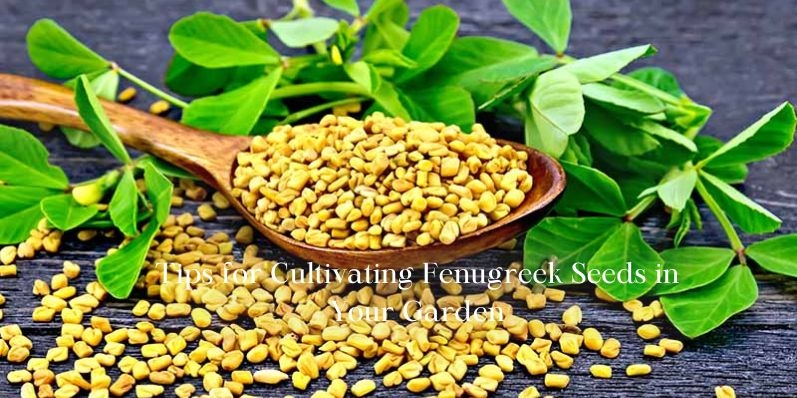
29-01-2024
Tips for Cultivating Fenugreek Seeds in Your Garden
- Admin
Introduction
Embarking on the journey of cultivating fenugreek seeds in your Australian garden can be a rewarding experience, providing you with a fresh and versatile herb that is not only delicious but also packed with health benefits. To ensure a successful fenugreek harvest, it's crucial to pay attention to various factors such as soil selection, seeding depth, irrigation practices, fertilization techniques, and proper harvesting methods. In this guide, we'll walk you through each step, helping you cultivate thriving fenugreek plants in the unique Australian climate.
Selecting the Right Soil Type and Preparing Nutrient-Rich Soil
Australia boasts diverse climates, from the arid Outback to the lush coastal regions, so it's essential to choose the right soil type for fenugreek cultivation. Fenugreek prefers well-draining soil with a slightly acidic to neutral pH. Loamy soil enriched with organic matter is ideal for optimal growth. To prepare nutrient-rich soil, incorporate well-rotted compost or aged manure to boost fertility. Perform a soil test to gauge pH levels and adjust accordingly for the best fenugreek yields.
Guidelines for Seeding Depth and Spacing Correctly
When it comes to sowing fenugreek seeds, precision is key. In Australia, fenugreek can be grown throughout the year in milder climates, but it's crucial to avoid extreme temperatures. For optimal germination, plant seeds at a depth of approximately 1/4 to 1/2 inch. Ensure proper spacing between seeds to allow for healthy plant development. Aim for about 4-6 inches between each seed, allowing adequate airflow and preventing overcrowding. This spacing is essential for robust fenugreek growth and easier harvesting.
Efficient Irrigation Practices and Maximizing Sun Exposure for Seedlings
Australia's climate can be challenging, with regions experiencing both drought and heavy rainfall. Fenugreek thrives in well-watered conditions, but waterlogging should be avoided. Utilize efficient irrigation practices, such as drip irrigation, to ensure consistent moisture without water stagnation. Additionally, fenugreek plants love sunlight. Position your garden in a location that receives full sun, providing at least 6-8 hours of sunlight daily for optimal growth. In hotter regions, partial shade during the hottest part of the day can protect seedlings from scorching.
Fertilization Techniques to Enhance Soil Fertility
To maximize soil fertility, employ appropriate fertilization techniques. Fenugreek benefits from a balanced, all-purpose fertilizer applied during the growing season. Incorporate the fertilizer into the soil before planting, following the recommended application rates. Alternatively, you can opt for organic fertilizers such as well-rotted manure or compost. Regularly monitor plant growth and adjust fertilization as needed, being cautious not to over-fertilize, as it may lead to excessive foliage growth at the expense of seed production.
When and How to Harvest Seeds and Preservation Process for Best Results
Timing is crucial when harvesting fenugreek seeds. Harvest the seeds once the plants have reached maturity, usually around 90-110 days after planting. The best indicator for harvest readiness is when the majority of the plant has turned yellow and started to dry. To harvest, cut the entire plant near the soil surface, bundling them together. Allow the bundles to dry in a well-ventilated area for about a week.
Once the fenugreek seeds are dry, gently rub the pods to release the seeds. Collect the seeds and store them in a cool, dry place in airtight containers. Properly stored fenugreek seeds can last for up to a year, retaining their flavor and potency. Consider grinding the seeds into a fine powder just before use to preserve their aromatic qualities.
Conclusion
Cultivating fenugreek seeds in your Australian garden is a delightful and achievable endeavor with the right knowledge and care. By selecting the right soil, following seeding guidelines, practicing efficient irrigation, implementing fertilization techniques, and mastering the art of harvesting and preservation, you'll be rewarded with a bountiful fenugreek harvest. Embrace the unique challenges and opportunities that the Australian climate presents, and soon you'll be enjoying the flavors and health benefits of homegrown fenugreek in your culinary creations. Happy gardening